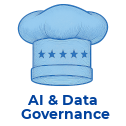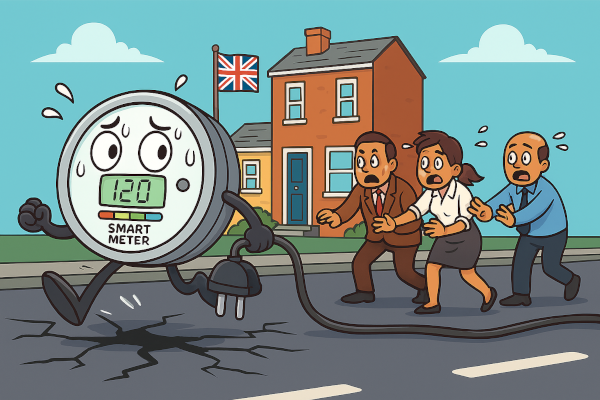Why Pain-Driven Governance Works
Governance programs often fail because they start with structure instead of urgency. But when you anchor governance in real business pain, where bad data is already costing time, trust, or money, you unlock traction, credibility, and momentum.
Some Eye-Opening Stats
- Up to 50% of knowledge workers’ time is wasted hunting for data due to poor governance and lack of trust. 1
- In the 2025 State of Enterprise Data Governance Report, nearly 40% of senior data leaders said their biggest challenge is proving governance impact to leadership. 2
- A full third of surveyed leaders identified embedding governance into workflows as their top modernization priority, not building committees or policies. 2
These numbers tell a clear story: governance must be designed to solve real problems, not just document them.
Expert Insight
Michael Brent, Director of Responsible AI at Boston Consulting Group, warns:
“AI governance will revolve around compliance with emerging regulations.”4
And a data leader from a global financial services firm shared this approach:
“We assigned practice leads for each data domain: owners who make approval decisions, supported by expert data stewards. The result is a governance model that moves at the speed of business, not behind it.” 2
This kind of domain-first strategy is what separates Governance Theater from Governance Impact.
Case Study: Smart Metering in Energy 3
The UK’s Smart Meter Rollout: A Governance Case Study in Overreach
In 2011, the UK government launched an ambitious plan: install smart meters in every home and small business across Great Britain by 2019. These meters would provide real-time energy usage data, enable dynamic pricing, and support the transition to a smarter, decarbonized energy grid.
But the rollout quickly became a cautionary tale.
What Went Wrong
- Missed Deadlines: The original 2019 target was pushed back multiple times. As of 2023, only 57% of meters were operating in smart mode.
- Technical Failures: Millions of meters malfunctioned, and up to 7 million could become obsolete when 2G/3G networks shut down.
- Inequitable Access: Installation rates lagged in rural areas and among lower-income households.
- Regulatory Misalignment: OFGEM’s (UK’s independent Office of Gas and Electricity Markets) punitive approach to missed targets clashed with the Public Accounts Committee’s call for more collaborative, outcome-driven governance.
Governance Lessons
The UK’s rollout tried to “boil the ocean” – launching a nationwide initiative without solving for domain-specific risks, stakeholder alignment, or technical readiness. It lacked modularity, prioritization, and adaptive governance.
As the National Audit Office noted:
“DESNZ (Department for Energy Security and Net Zero) must ensure it has robust information on both the total costs and benefits of smart meters… to maximize value for money from the remainder of the programme”.
The smart meter rollout is a real-world example of governance failure pattern #2: Mistaking scale for strategy (i.e. Boiling the Ocean).
It shows what happens when ambition outpaces infrastructure, and why modular, pain-driven governance is essential for success.
Takeaway
When launching governance, don’t ask:
“Where should we start?”
Ask:
“Where is bad data already hurting us?”
That’s your pilot.
That’s your proof.
That’s how governance earns the right to scale.
Credits:
1 The Data Governance Journey in Practice: Insights from Case Study Research
2 What We Learned from the 2025 State of Enterprise Data Governance Report
3 Data management and use: case studies of technologies and governance
4 Industry commentary Leaders in Responsible AI: A Member’s Story

